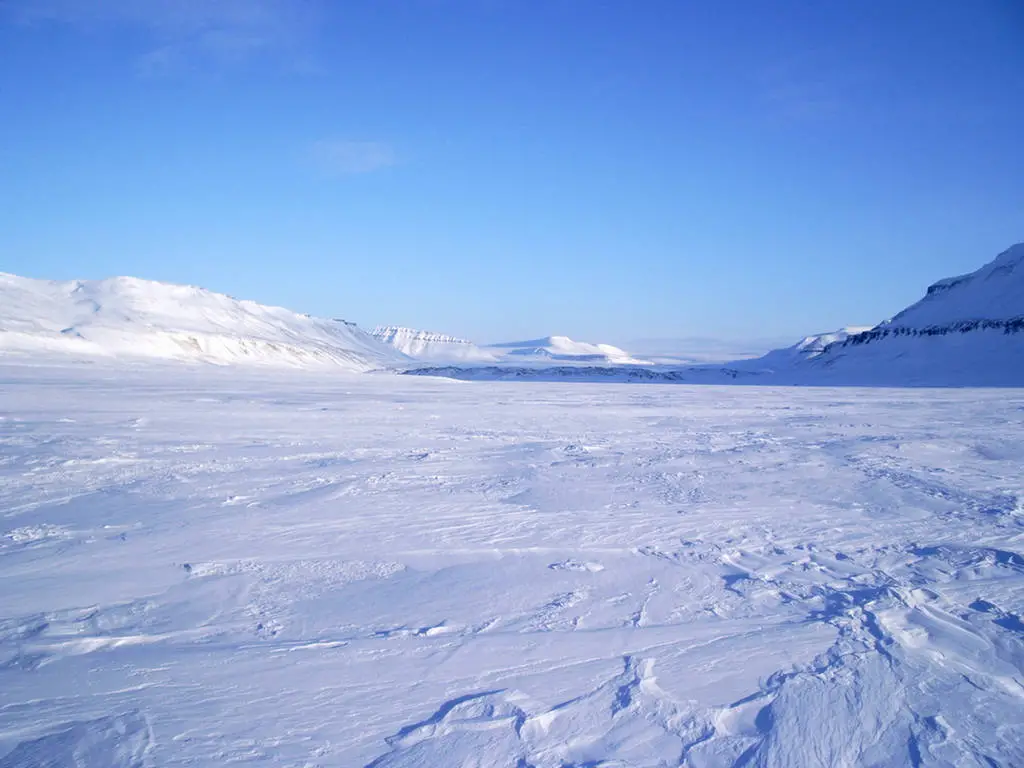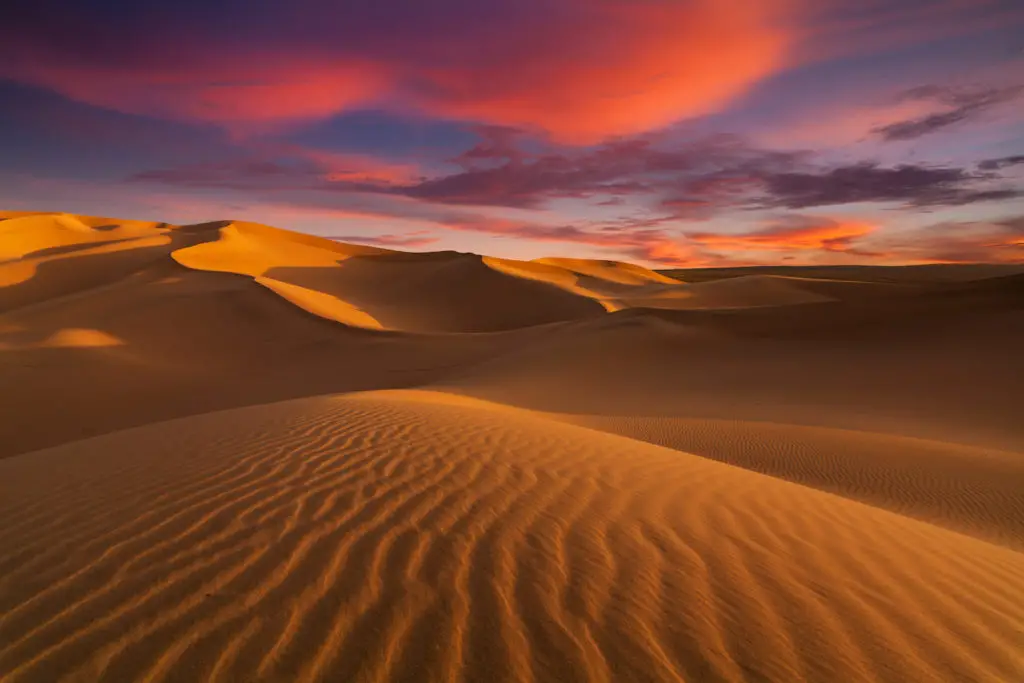Deserts are one of the many different types of terrains characterized by usually inhabitable barren land. There are 4 main types of deserts: hot-and-dry (or subtropical) desert, the semiarid (or cold-winter) desert, the coastal desert, and the cold (or polar) desert.
Contents
Hot and Dry Deserts
As the name suggests, these deserts are hot and dry… they are what most people think of when they hear the word desert. Different kinds of deserts have hot and dry periods but this particular type experiences it all throughout the year.
The Sahara is an example of a hot and dry desert. They can also be found in Australia, South Asia, and Central and South America.
Rainfall is usually sparse in hot-and-dry deserts. In some instances, rain evaporates before reaching the ground. Rain occurs in short bursts that don’t last very long. These deserts are also known as sub-tropical deserts.
Cold Winter Deserts
Cold winter deserts have long, dry summers and a meager amount of precipitation in the winter. Also known as semiarid deserts, they are similar in characteristics to the sub-tropical desert, however, the temperatures are usually cooler.
The Great Basin, a desert located in the United States, is an example of this desert type where annual rainfall can be as low as only 2 to 4 cm (about 0.8 to 1.5 inches). The average temperature ranges between 21-27°C (70-80°F).
Coastal Deserts
These deserts have cool winters however the summers are warm. Coastal deserts are usually found in cool to warm regions. An example of this kind of desert is the Namib desert located in the African countries Angola and Namibia.

The average temperature ranges between 13 and 24° Celsius and the annual average rainfall is between 3 and 6 inches in these desert areas.
Polar Deserts
Polar deserts are the largest deserts on earth (in terms of area). These include the Antarctic Desert and Arctic Desert. The Arctic Polar Desert spans 5.4 million square miles covers parts of Alaska, Canada, Greenland, Iceland, Norway, Sweden, Finland, and Russia.

The Antarctic desert, on the other hand, covers the entire continent of Antarctica which is about 5.5 million square miles.
Annual precipitation falls between 6 and 10 inches. And, as is already apparent, temperatures in these deserts are extremely cold and usually fall and stay below freezing point.
Further Reading:




